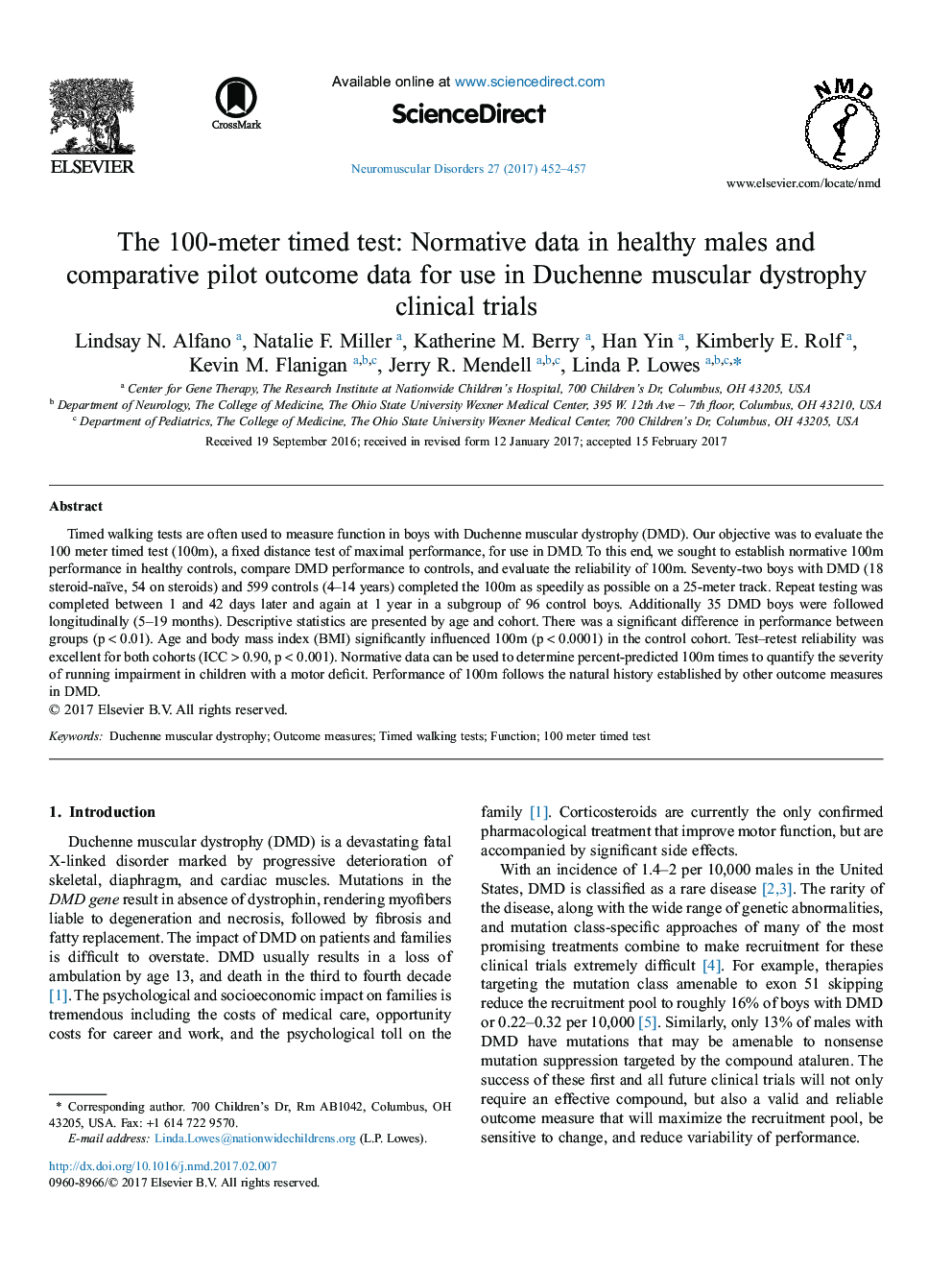| Article ID | Journal | Published Year | Pages | File Type |
|---|---|---|---|---|
| 5632282 | Neuromuscular Disorders | 2017 | 6 Pages |
â¢The 100m was developed to assess maximal running performance over a fixed distance.â¢The 100m reliably detects a significant difference between DMD and controls.â¢Normative data can be used to determine percent-predicted 100m times.â¢DMD cohort performance mimicked expected changes consistent with natural history.
Timed walking tests are often used to measure function in boys with Duchenne muscular dystrophy (DMD). Our objective was to evaluate the 100 meter timed test (100m), a fixed distance test of maximal performance, for use in DMD. To this end, we sought to establish normative 100m performance in healthy controls, compare DMD performance to controls, and evaluate the reliability of 100m. Seventy-two boys with DMD (18 steroid-naïve, 54 on steroids) and 599 controls (4-14 years) completed the 100m as speedily as possible on a 25-meter track. Repeat testing was completed between 1 and 42 days later and again at 1 year in a subgroup of 96 control boys. Additionally 35 DMD boys were followed longitudinally (5-19 months). Descriptive statistics are presented by age and cohort. There was a significant difference in performance between groups (pâ<â0.01). Age and body mass index (BMI) significantly influenced 100m (pâ<â0.0001) in the control cohort. Test-retest reliability was excellent for both cohorts (ICCâ>â0.90, pâ<â0.001). Normative data can be used to determine percent-predicted 100m times to quantify the severity of running impairment in children with a motor deficit. Performance of 100m follows the natural history established by other outcome measures in DMD.
